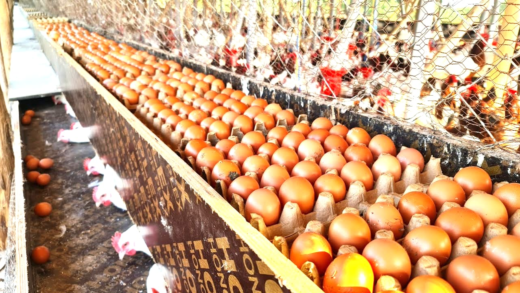Rats and mice differ significantly in size, appearance, and behavior. Key signs of infestations include droppings, gnaw marks, and nests. Preventive measures such as sealing entry points and maintaining cleanliness are crucial. If rodents are found, it’s important to act quickly by setting traps or contacting pest control. Understanding these aspects helps in effective rodent management.
Key Differences Between Rats and Mice: Understanding the Basics
The differences between rats and mice are significant and can help you identify which pest you’re dealing with. First off, size matters. Rats are generally larger than mice. An adult rat can weigh between 8 to 12 ounces, while a mouse usually weighs around 0.5 to 1 ounce. This size difference is not just about weight; it’s about length as well. Rats can grow up to 10 inches long, excluding their tails, while mice typically reach about 3 to 4 inches.
Next, consider their appearance. Rats have thicker bodies, shorter tails, and larger heads compared to mice. Mice have slender bodies and long, thin tails. These physical traits can be crucial when identifying an infestation.
Furthermore, their behavior varies. Rats are more cautious and tend to explore new environments slowly, while mice are curious and will quickly investigate new objects or areas. Understanding these behaviors can help in effective pest control.
Signs of a Rat Infestation: What to Look For
Identifying signs of rat infestation is crucial for timely intervention. Common signs of rat infestation include:
- Droppings: Rat droppings are larger, about 0.5 inches long, and are often found near food sources.
- Gnaw Marks: Rats have strong teeth and will gnaw on wood, wires, and plastic. Look for fresh gnaw marks.
- Nests: Rats create nests using shredded paper, fabric, or insulation, often in hidden areas.
- Sounds: Noises such as scratching or scurrying, especially at night, can indicate rat activity.
If you notice these signs, it is advisable to take immediate action to eliminate the infestation before it worsens.
Common Signs of a Mouse Infestation: Identifying the Little Pests
Mouse infestations often go unnoticed until significant damage occurs. Here are common signs to watch for:
- Droppings: Mouse droppings are smaller, about 1/8 inch long, and can be found in clusters near food sources.
- Tracks: Mice leave behind tracks in dusty areas. Look for tiny footprints or tail marks.
- Chewed Items: Mice will chew through packaging, wires, and furniture to access food or create nests.
- Urine Smell: A strong, musky odor can indicate a significant mouse presence.
Recognizing these signs early can help you effectively manage a mouse problem.
Droppings Comparison: Rat and Mouse Appearance
Understanding the difference between rat and mouse droppings is essential for identifying the type of infestation:
- Rat Droppings: Typically larger, about 0.5 inches, and can be found in scattered clusters. They have a smooth appearance.
- Mouse Droppings: Smaller, around 1/8 inch, and have a more pointed shape. They are often found in groups, indicating a larger population.
Identifying these droppings can provide insights into the type of rodent in your home, allowing for more targeted pest control measures.
Size Matters: How Big Do Rats and Mice Get?
Size is a crucial factor when distinguishing between rats and mice. Rats are significantly larger than mice, which can help you understand the scale of an infestation. Adult rats typically weigh between 8 to 12 ounces and can grow up to 10 inches in length, excluding their tails. Mice, on the other hand, are much smaller, weighing about 0.5 to 1 ounce and measuring around 3 to 4 inches long. This size difference not only affects their appearance but also their behavior and diet.
When dealing with an infestation, knowing the sizes can assist in identifying the type of rodent you’re facing. If you see a creature that is larger than your average pet hamster, it’s likely a rat. Recognizing these differences can lead to more effective pest control strategies.
What Do Rats and Mice Eat? Dietary Preferences Explained
Rats and mice have different dietary preferences that reflect their behavior and environment. Rats are omnivorous, consuming a wide variety of foods, including grains, fruits, and even meat. They are known to raid pantries and can eat nearly anything edible, which makes them particularly problematic in homes.
Mice, while also omnivorous, tend to prefer grains and seeds. They are less likely to consume meat compared to rats. Their small size limits their ability to access certain foods, which might explain their preference for softer items like bread or cereal. Understanding these dietary habits can help homeowners secure food sources and reduce the risk of attracting either pest.
Damage Assessment: Rats vs Mice – What’s the Difference?
When it comes to damage assessment, rats and mice inflict varying degrees of destruction. Rats are notorious for their gnawing habits. They can chew through electrical wires, wood, and even concrete, leading to significant structural damage and fire hazards. Their larger size means they can cause more extensive harm in a shorter amount of time.
Mice, while destructive, typically cause less damage than rats. They tend to chew on packaging, furniture, and insulation, but their smaller size limits the scale of the damage. However, they can still create considerable messes and damage food supplies. Identifying which rodent is causing the damage can aid in choosing the right pest control measures.
Behavior Patterns: How Rats and Mice Act Differently
Rats and mice exhibit distinct behavior patterns that can help in identifying them. Rats are generally more cautious and can be more aggressive when threatened. They explore new environments slowly and are often seen at night. Their intelligence allows them to avoid traps and learn from past experiences.
Mice, in contrast, are curious creatures. They will quickly investigate new objects and are more likely to be seen during the day. This boldness can make them easier to spot but also allows them to quickly reproduce and create larger infestations. Understanding these behavior patterns is essential for effective pest management and prevention strategies.
Prevention Tips: Keeping Rats and Mice Out of Your Home
Preventing rats and mice from invading your home is crucial for maintaining a healthy living environment. Here are key prevention tips:
- Seal Entry Points: Inspect your home for cracks and holes. Seal gaps around windows, doors, and foundations to block entry.
- Store Food Properly: Keep food in airtight containers to deter rodents. This includes pet food and pantry staples.
- Maintain Cleanliness: Regularly clean your home, especially kitchens and dining areas, to eliminate food sources.
- Trim Vegetation: Keep bushes and trees trimmed away from your home to reduce hiding spots for rodents.
- Use Traps and Baits: Set traps in areas where you suspect rodent activity. Baits can also be effective in reducing populations.
Implementing these strategies can significantly decrease the chances of a rodent infestation in your home.
What to Do If You Find a Rat or Mouse in Your House?
Encountering a rat or mouse in your home can be alarming. Here’s how to respond effectively:
- Stay Calm: Avoid panicking. Remain composed to think clearly about your next steps.
- Identify the Rodent: If possible, determine whether it’s a rat or mouse. This helps in choosing the right control method.
- Set Traps: Use snap traps or glue boards to catch the rodent. Place them in areas with signs of activity.
- Contact Pest Control: If the problem seems severe or if you’re uncomfortable handling it, reach out to professional pest control services.
- Clean Up: After dealing with the rodent, clean the area thoroughly to eliminate any droppings or nesting materials.
Taking prompt action can prevent further infestations and keep your home safe.
Summary of Key Differences and Signs: Quick Reference
Understanding the differences between rats and mice, as well as the signs of infestation, is essential. Here’s a quick reference:
- Size: Rats are larger (8-12 ounces) compared to mice (0.5-1 ounce).
- Droppings: Rat droppings are about 0.5 inches long; mouse droppings are 1/8 inch.
- Behavior: Rats are cautious and explore slowly; mice are curious and quick to investigate.
- Signs of Infestation: Look for droppings, gnaw marks, nests, and sounds of activity.
- Damage: Rats cause more structural damage; mice typically damage food and packaging.
This summary provides a concise overview to assist in identifying and managing rodent issues effectively.
Frequently Asked Questions: Your Queries Answered
Here are some common questions regarding rats and mice:
- How can I tell if I have rats or mice? Look for size differences, droppings, and behavioral traits to identify.
- What attracts rats and mice to my home? Food sources, shelter, and warmth are major attractants for both rodents.
- Can I prevent infestations on my own? Yes, sealing entry points and maintaining cleanliness are effective preventive measures.
- What should I do if I see a rat during the day? Rats are primarily nocturnal, so daytime sightings may indicate a significant infestation. Consider contacting pest control.
- Are there natural repellents for rodents? Some essential oils, like peppermint, can deter rodents when used strategically around your home.
These FAQs address common concerns and provide guidance for effective rodent management.





Comments are closed.